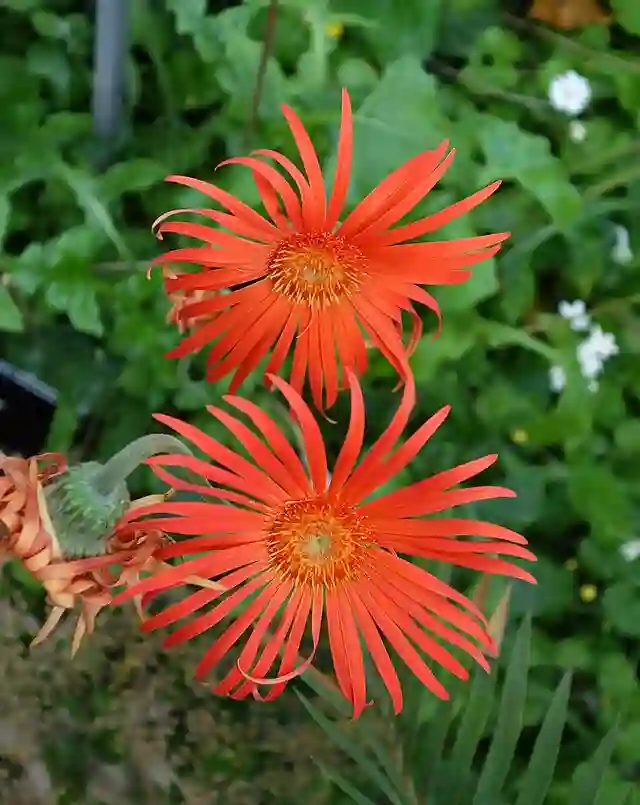
What is Physalis peruviana?
Physalis peruviana, which I sometimes call Cape gooseberry or goldenberry, is this vibrant little fruit encased in a papery husk. The first time I saw it, I was struck by how much it looked like a tiny lantern. When you peel away the husk, you get this bright, yellow-orange berry that’s both tart and sweet. It’s got this really unique flavor, a mix of pineapple and tomato, which makes it a fun addition to both sweet and savory dishes. Plus, it’s packed with nutrients, which is always a bonus.
95 Species in Genus Physalis
Physalis Peruviana vs Physalis Pruinosa
I’ve found that Physalis Peruviana, with its larger, more flavorful fruit, has been my favorite for snacking, while Physalis Pruinosa‘s smaller, tangier berries are a fun surprise in my garden but not quite as satisfying to eat.
How to grow Physalis peruviana?
Here’s a step-by-step guide to growing Physalis peruviana:
1. Choosing the Right Location
- Sunlight: Cape gooseberry requires full sun for optimal growth. Aim for at least 6-8 hours of direct sunlight daily.
- Space: The plant can grow up to 3-4 feet tall and wide, so ensure sufficient spacing between plants (around 2-3 feet apart).
2. Soil Preparation
- Type: Prefers well-drained, sandy loam or loamy soil. Good drainage is crucial to prevent root rot.
- pH: The ideal soil pH is slightly acidic to neutral (around 5.5 to 7.0).
3. Planting
- Starting Seeds Indoors: Sow seeds indoors 6-8 weeks before the last frost date. Plant seeds about 1/4 inch deep in seed-starting mix.
- Transplanting: Transplant seedlings outdoors after the danger of frost has passed and the soil has warmed up. Harden off seedlings by gradually exposing them to outdoor conditions for a week.
- Direct Sowing: In warmer climates, you can directly sow seeds outdoors after the last frost.
4. Watering
- Initial Watering: Water thoroughly after planting to help establish the roots.
- Regular Watering: Keep the soil consistently moist, especially during dry periods. Water deeply once or twice a week, allowing the top inch of soil to dry out between waterings.
5. Mulching
- Apply a 2-3 inch layer of mulch around the base of the plants to retain moisture, regulate soil temperature, and suppress weeds. Keep mulch a few inches away from the stems to prevent rot.
6. Fertilizing
- Timing: Fertilize at planting and then every 4-6 weeks during the growing season.
- Type: Use a balanced, slow-release fertilizer or a liquid fertilizer with equal parts nitrogen, phosphorus, and potassium.
- Application: Follow the instructions on the fertilizer package for the correct amount and application method.
7. Pruning and Staking
- Pruning: Regularly pinch back the growing tips to encourage bushier growth and more fruit production.
- Staking: Provide support with stakes or cages if necessary, as plants can become top-heavy with fruit.
8. Pest and Disease Control
- Pests: Watch for aphids, whiteflies, and spider mites. Use insecticidal soap or neem oil to treat infestations.
- Diseases: Ensure good air circulation around the plants to prevent fungal diseases like powdery mildew and root rot. Avoid overhead watering to reduce the risk of fungal infections.
9. Harvesting
- Timing: Fruits are ready to harvest when the husks turn brown and papery, and the fruits inside are bright orange.
- Method: Gently twist and pull the fruits from the plant. Be careful not to damage the plant or unripe fruits.
10. General Care
- Monitoring: Regularly check the plants for signs of stress, disease, or pests.
- Winter Care: In cooler climates, treat Cape gooseberry as an annual or grow it in pots that can be brought indoors during the winter. In warmer climates, it can be a perennial.
How big is the Physalis peruviana?
Physalis peruviana plants can get quite bushy, usually reaching about two to three feet in height, though some of mine have grown a bit taller, closer to four feet. The branches spread out quite a bit, so I made sure to give each plant enough space to grow without crowding its neighbors. It’s a pretty manageable size for a home garden, and they didn’t require too much special care once they were established.
How to eat Physalis peruviana?
Eating Physalis peruviana is one of my favorite parts. I like to eat them fresh, just popping them in my mouth like candy. Sometimes, I’ll toss them into salads for a burst of color and flavor, or I’ll make a quick jam with them. They also pair well with cheese, and I’ve used them to make a delicious chutney that goes great with grilled meats. Their versatility is part of what makes them so fun to grow and eat.
Where to buy Physalis peruviana?
When I want to buy Physalis peruviana, I usually head to my local farmer’s market. They tend to have the freshest and most flavorful ones. If the market is out of season, specialty grocery stores or health food stores often carry them. I’ve even found them in the exotic fruits section of larger supermarkets. Buying them is a bit of a treat, especially when I haven’t had the chance to grow them myself.
If i die, water my plants!



